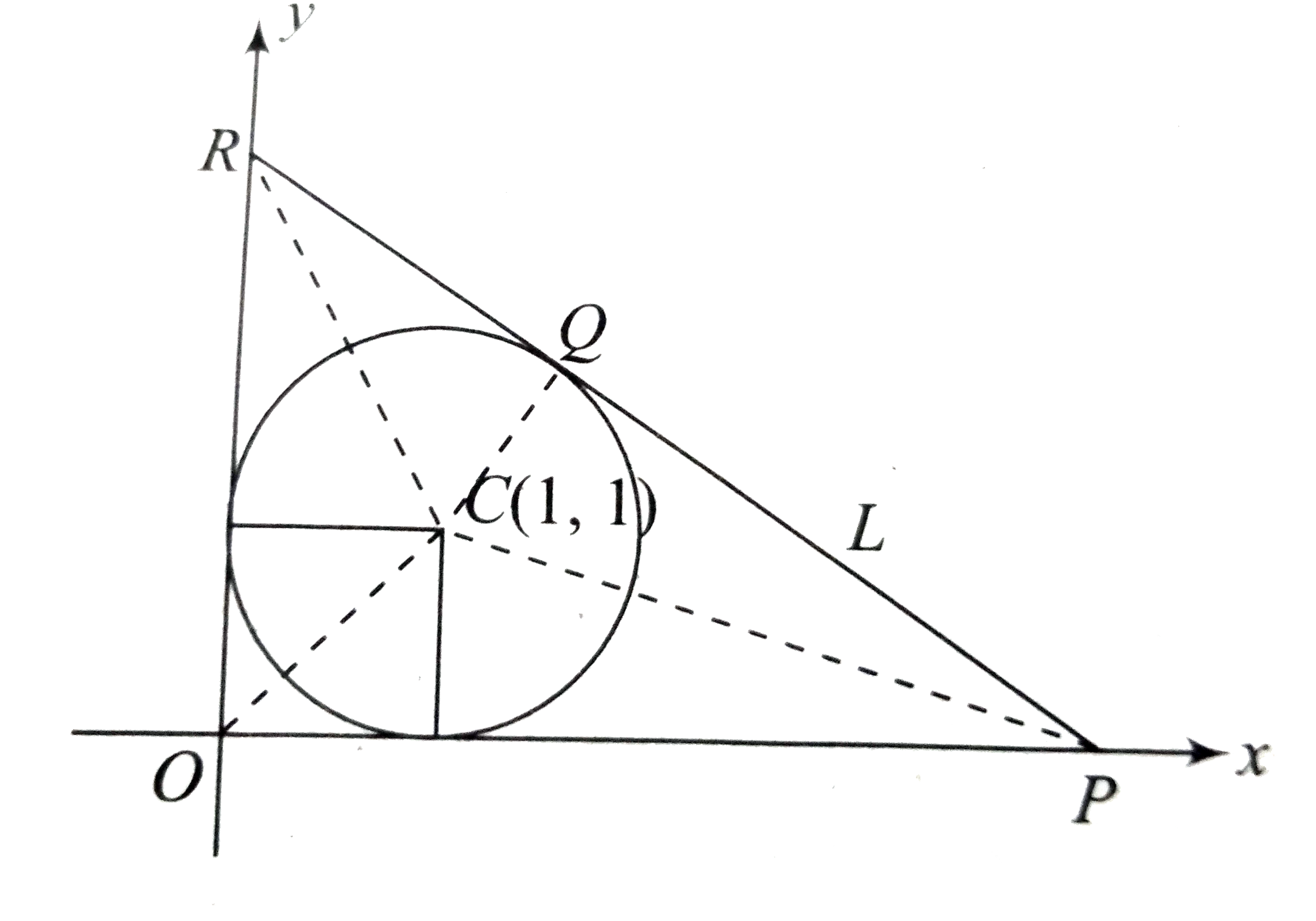In an Agrad plane z1,z2andz3 are, respectively, the vertices of an isosceles trinagle ABC with AC= BC and ∠CAB=θ. If z4 is incentre of triangle, then
The value of (z2−z1)2tanθtanθ/2 is
(z1+z2−2z3)
(z1+z2−z3)(z1+z2−z4)
−(z1+z2−2z3)(z1+z2−2z4)
z4=√z2z3
The correct Answer is:C
To solve the problem, we need to find the value of (z2−z1)2tanθtanθ2 given the vertices of an isosceles triangle ABC with AC=BC and ∠CAB=θ. Here’s a step-by-step breakdown of the solution:
Step 1: Understand the Geometry
We have an isosceles triangle ABC where AC=BC and ∠CAB=θ. Let:
- z1 represent the vertex A,
- z2 represent the vertex B,
- z3 represent the vertex C.
Step 2: Define the Coordinates
Assume the coordinates of the vertices in the complex plane:
- z1=0 (for simplicity, we place A at the origin),
- z2=b (let B be at b on the real axis),
- z3=c (the coordinates of C will depend on the angle θ).
Since AC=BC, we can express C in terms of b and θ:
- The coordinates of C can be represented as z3=b2+i⋅h, where h is the height from C to the base AB.
Step 3: Calculate the Height h
Using trigonometric relationships:
- The height h can be expressed as:
h=ACsinθ=b2tanθ2
Step 4: Find z2−z1
Now, calculate z2−z1:
z2−z1=b−0=b
Step 5: Calculate (z2−z1)2
Now, square the difference:
(z2−z1)2=b2
Step 6: Find tanθ and tanθ2
Using the definitions of tangent:
tanθ=hb2=2hb
tanθ2=hb2=2hb
Step 7: Substitute into the Expression
Now substitute these values into the expression:
(z2−z1)2tanθtanθ2=b2(2hb)(2hb)
=b2⋅4h2b2=4h2
Step 8: Final Expression
Thus, the value of (z2−z1)2tanθtanθ2 simplifies to:
4h2
Conclusion
The final value of (z2−z1)2tanθtanθ2 is 4h2.
We have an isosceles triangle ABC where AC=BC and ∠CAB=θ. Let:
- z1 represent the vertex A,
- z2 represent the vertex B,
- z3 represent the vertex C.
Assume the coordinates of the vertices in the complex plane:
- z1=0 (for simplicity, we place A at the origin),
- z2=b (let B be at b on the real axis),
- z3=c (the coordinates of C will depend on the angle θ).
- The coordinates of C can be represented as z3=b2+i⋅h, where h is the height from C to the base AB.
Using trigonometric relationships:
- The height h can be expressed as:
h=ACsinθ=b2tanθ2
Now, calculate z2−z1:
z2−z1=b−0=b
Now, square the difference:
(z2−z1)2=b2
Using the definitions of tangent:
tanθ=hb2=2hb
tanθ2=hb2=2hb
Now substitute these values into the expression:
(z2−z1)2tanθtanθ2=b2(2hb)(2hb)
=b2⋅4h2b2=4h2
Thus, the value of (z2−z1)2tanθtanθ2 simplifies to:
4h2
The final value of (z2−z1)2tanθtanθ2 is 4h2.
Topper's Solved these Questions
- COMPLEX NUMBERSBook:CENGAGE ENGLISHChapter:COMPLEX NUMBERSExercise:NUMERICAL VALUE TYPES
Explore 33 Videos
- COMPLEX NUMBERSBook:CENGAGE ENGLISHChapter:COMPLEX NUMBERSExercise:ARCHIVES (SINGLE CORRECT ANSWER TYPE )
Explore 11 Videos
- COMPLEX NUMBERSBook:CENGAGE ENGLISHChapter:COMPLEX NUMBERSExercise:MULTIPLE CORRECT ANSWERS TYPE
Explore 49 Videos
- CIRCLESBook:CENGAGE ENGLISHChapter:CIRCLESExercise:Comprehension Type
Explore 8 Videos
- CONIC SECTIONSBook:CENGAGE ENGLISHChapter:CONIC SECTIONSExercise:All Questions
Explore 101 Videos
Similar Questions
If x=a+bi is a complex number such that x2=3+4iandx3=2+1i,wherei=√−1,then(a+b) equal to ______.
View SolutionIf ∣∣∣z−4z∣∣∣=2 , then the maximum value of |Z| is equal to (1) √3+1 (2) √5+1 (3) 2 (4) 2+√2
View SolutionIf z=ω,ω2whereω is a non-real complex cube root of unity, are two vertices of an equilateral triangle in the Argand plane, then the third vertex may be represented by z=1 b. z=0 c. z=−2 d. z=−1
View Solution
In the diagram as shown, a circle is drawn with centre C(1,1) and radius 1 and a line L. The line L is tangent to the circle at Q. Further L meets the y-axis at R and the x-axis at P in such a way that the angle OPQ equals θ where 0<θ<π2.
Area of triangle OPR when θ=π/4 is
View SolutionGiven that A(1,1) and B(2,−3) are two points and D is a point on AB produced such that AD=3AB. Find the coordinates of D.
View SolutionOn the Argand plane z1,z2andz3 are respectively, the vertices of an isosceles triangle ABC with AC=BC and equal angles are θ. If z4 is the incenter of the triangle, then prove that (z2−z1)(z3−z1)=(1+secθ)(z4−z1)2.
View SolutionIf z_(1),z_(2),z_(3) are the vertices of an equilateral triangle,then value of (z_(2)-z_(3))^(2)+(z_(3)-z_(1))^(2)+(z_(1)-z_(2))^(2)
View Solutionz_(1),z_(2) and z_(3) are the vertices of a triangle ABC such that |z_(1)|=|z_(2)|=|z_(3)| and AB=AC. Then ((z_(1)+z_(3))(z_(1)+z_(2)))/((z_(2)+z_(3))^(2)) is
View SolutionIf A(z1), B(z2), C(z3) are vertices of a triangle such that z3=z2−iz11−i and |z1|=3, |z2|=4 and |z2+iz1|=|z1|+|z2|, then area of triangle ABC is
View SolutionIf z1,z2,z3 are the vertices of an equilational triangle ABC such that |z1−i|=|z2−i|=|z3−i|, then |z1+z2+z3| equals to
View SolutionIn an Agrad plane z1,z2andz3 are, respectively, the vertices of an isosceles trinagle ABC with AC= BC and ∠CAB=θ. If z4 is incentre of triangle, then
The value of AB×AC/(IA)2 is
View SolutionIn an Agrad plane z1,z2andz3 are, respectively, the vertices of an isosceles trinagle ABC with AC= BC and ∠CAB=θ. If z4 is incentre of triangle, then
The value of (z4−z1)2(cosθ+1)secθ is
View SolutionIn an Agrad plane z1,z2andz3 are, respectively, the vertices of an isosceles trinagle ABC with AC= BC and ∠CAB=θ. If z4 is incentre of triangle, then
The value of (z2−z1)2tanθtanθ/2 is
View SolutionLet the complex numbers Z1,Z2andZ3 are the vertices A, B and C respectively of an isosceles right - angled triangle ABC with right angle at C, then the value of (Z1−Z2)2(Z1−Z3)(Z3−Z2) is equal to
View SolutionIf z_(1),z_(2),z_(3) represent the vertices of an equilateral triangle such that |z_(1)|=|z_(2)|=|z_(3)| , then
View Solution
